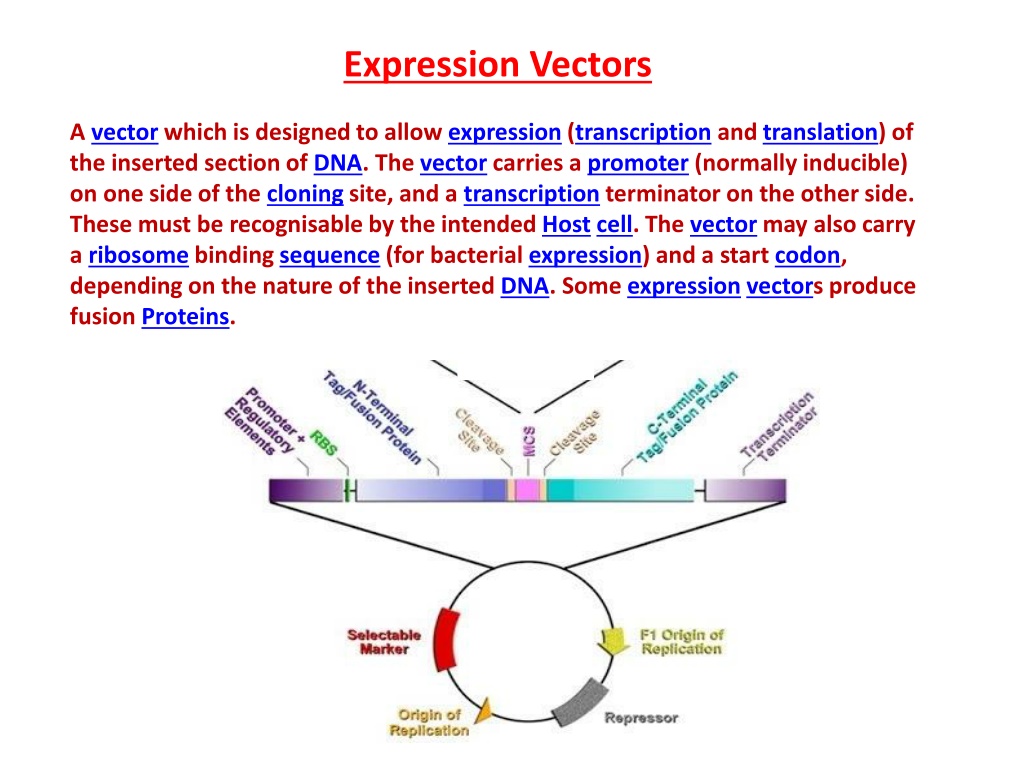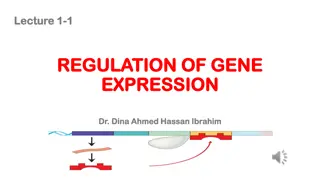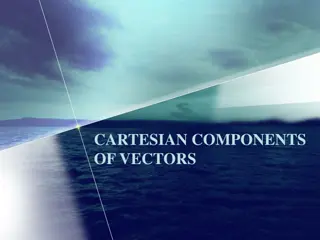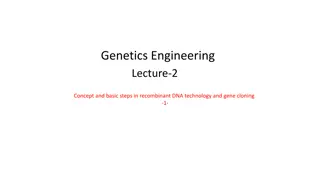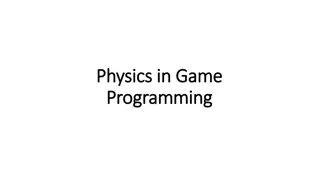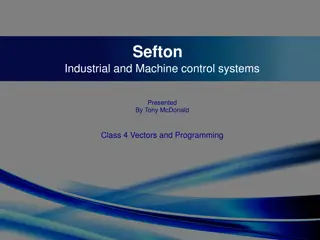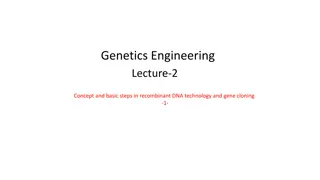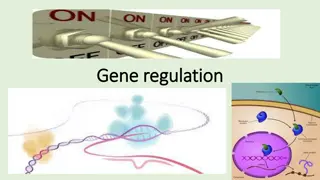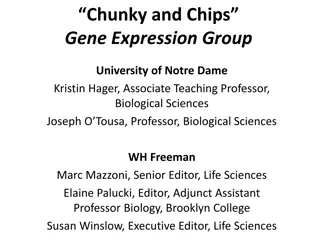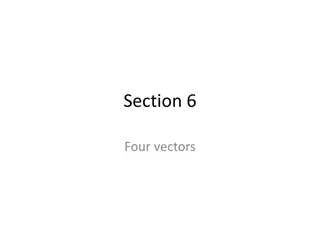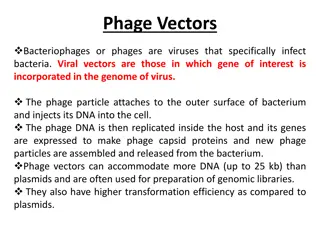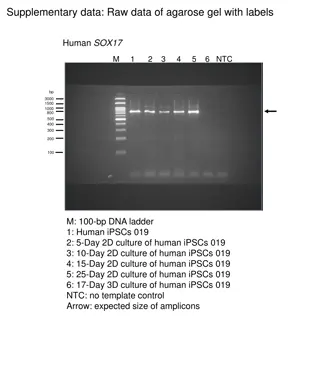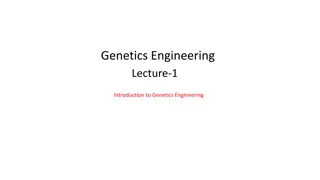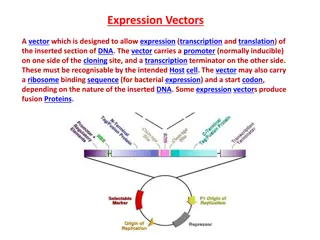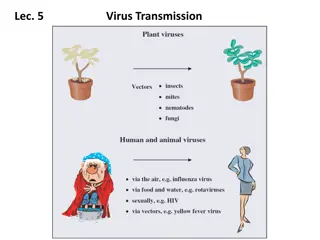Understanding Expression Vectors for Efficient Gene Expression
Expression vectors are designed to facilitate gene expression by carrying essential elements such as promoters, terminators, and fusion tags. They allow precise control over gene regulation for transcription and translation in host cells, enabling efficient protein production. Different promoters like Lac, trp, tac, and T7 offer varying levels of gene expression regulation. The pET bacterial recombinant protein vector system, driven by the T7 promoter, is widely used for high-level protein expression in E. coli. By leveraging these tools, researchers can optimize and streamline the process of synthesizing desired proteins in molecular biology applications.
Download Presentation

Please find below an Image/Link to download the presentation.
The content on the website is provided AS IS for your information and personal use only. It may not be sold, licensed, or shared on other websites without obtaining consent from the author. Download presentation by click this link. If you encounter any issues during the download, it is possible that the publisher has removed the file from their server.
E N D
Presentation Transcript
Expression Vectors A vector which is designed to allow expression (transcription and translation) of the inserted section of DNA. The vector carries a promoter (normally inducible) on one side of the cloning site, and a transcription terminator on the other side. These must be recognisable by the intended Host cell. The vector may also carry a ribosome binding sequence (for bacterial expression) and a start codon, depending on the nature of the inserted DNA. Some expression vectors produce fusion Proteins.
N or C terminal tags offer several potential advantage such as improved expression, Solubility, improved detection and purification. Such vector-carried promoters have been optimized for binding of the E. coli RNA polymerase and many of them can be regulated easily by changes in the growth conditions of the host cell.
Promoters: critical element of an expression vector 1. Lac Promoter: Induced by IPTG, weak 2. trp Promoter: Induced by 3-beta-indoleacrylic acid To minimize the problems associated with high-level expression, it is usual to use a vector in which the cloned gene is under the control of a regulated promoter. Regulated Promoters 1. tac Promoter: Hybrid of trp and lac Promoter, stronger than either of them, Induced By IPTG
2. T7 Promoter: Strong & Regulated pET Bacterial Recombinant Protein Vector The pET vector system is a powerful and widely used system for expressing recombinant proteins in E. coli. The gene of interest is cloned into the pET vector under the control of the strong bacteriophage T7 transcription and translation regulatory system. Activation of expression is achieved by providing T7 RNA polymerase within the cell. When the system is fully induced, nearly all of the cell s resources are devoted to expressing the gene of interest. With just a few hours of induction, the recombinant protein could comprise nearly half of the cell s total protein.
T7 promoter: Drives high-level transcription of the gene of interest when T7 RNA polymerase is present. When placed immediately upstream of a LacO element, the entire cassette is known as the T7lac promoter. LacO: Binding site for LacI. This element inhibits activity of the T7 promoter when LacI protein is present, preventing leaky expression of the gene of interest. RBS: The ribosome-binding site and translation initiation element from T7 bacteriophage. This allows for efficient production of the protein of interest. ORF: The open reading frame of your gene of interest is placed here. T7 terminator: Signal sequence to terminate the transcript made from the gene of interest, preventing run-on transcription. Ampicillin: Ampicillin resistance gene. It allows the plasmid to be maintained by ampicillin selection in E. coli. pBR322 ori: pBR322 origin of replication. Plasmids carrying this origin as well as the Rop gene exist in low copy numbers in E. coli. Rop: Repressor of primer. It encodes a small protein that regulates plasmid copy number. The presence of the Rop protein, in combination of pBR322 origin of replication on the plasmid, results in low copy numbers of the plasmid. LacI: The E. coli natural promoter and coding sequence for the lac repressor. In the absence of induction of the system (i.e. without IPTG), the LacI protein represses transcription of the gene of interest from the T7lac promoter, as well as transcription of T7 RNA polymerase from the LacUV5 promoter in host strains used for recombinant protein production. pET Vector
3. The PL promoter system combines very tight transcriptional control with high levels of gene expression. This is achieved by putting the cloned gene under the control of the PL promoter carried on a vector, while the PL promoter is controlled by a cI repressor gene in the E. coli host. This cI gene is itself under the control of the tryptophan (trp) promoter
Temperature Responsive System The creation of the cI857 repressor mutant of cI made it thermo-labile above 37 C , meaning repression becomes inactive above a certain temperature. This system is widely used for industrial production of recombinant proteins in E. coli under up-shift in temperature
4. The pBAD vectors, offer extremely tight control of expression of cloned genes. The pBAD vectors carry the promoter of the araBAD (arabinose) operon and the gene encoding the positive and negative regulator of this promoter, araC. AraC is a transcriptional regulator that forms a complex with L-arabinose.
Protein Purification facilitation Many cloning vectors have been engineered so that the protein being expressed will be fused to another protein, called a tag, which can be used to facilitate protein purification. Examples of tags include glutathione- S-transferase, the MalE (maltose-binding) Protein (MBP) and multiple histidine residues (HIS6 Tag), which can easily be purified by affinity chromatography. What kind of resins or support medium is used for the purification of 1. Glutathione S- transferase (GST), 2. MBP (Maltose binding protein), and 3. His-tagged recombinant proteins? 1. Gultathione Sepharose 2. Amylose Resin 3. Ni-NTA (Nitriloacetic Acid)
The tag vectors are usually constructed so that the coding sequence for an amino acid sequence cleaved by a specific protease is inserted between the coding sequence for the tag and the gene being expressed. After purification, the tag protein can be cleaved off with the specific protease to leave a normal or nearly normal protein.
